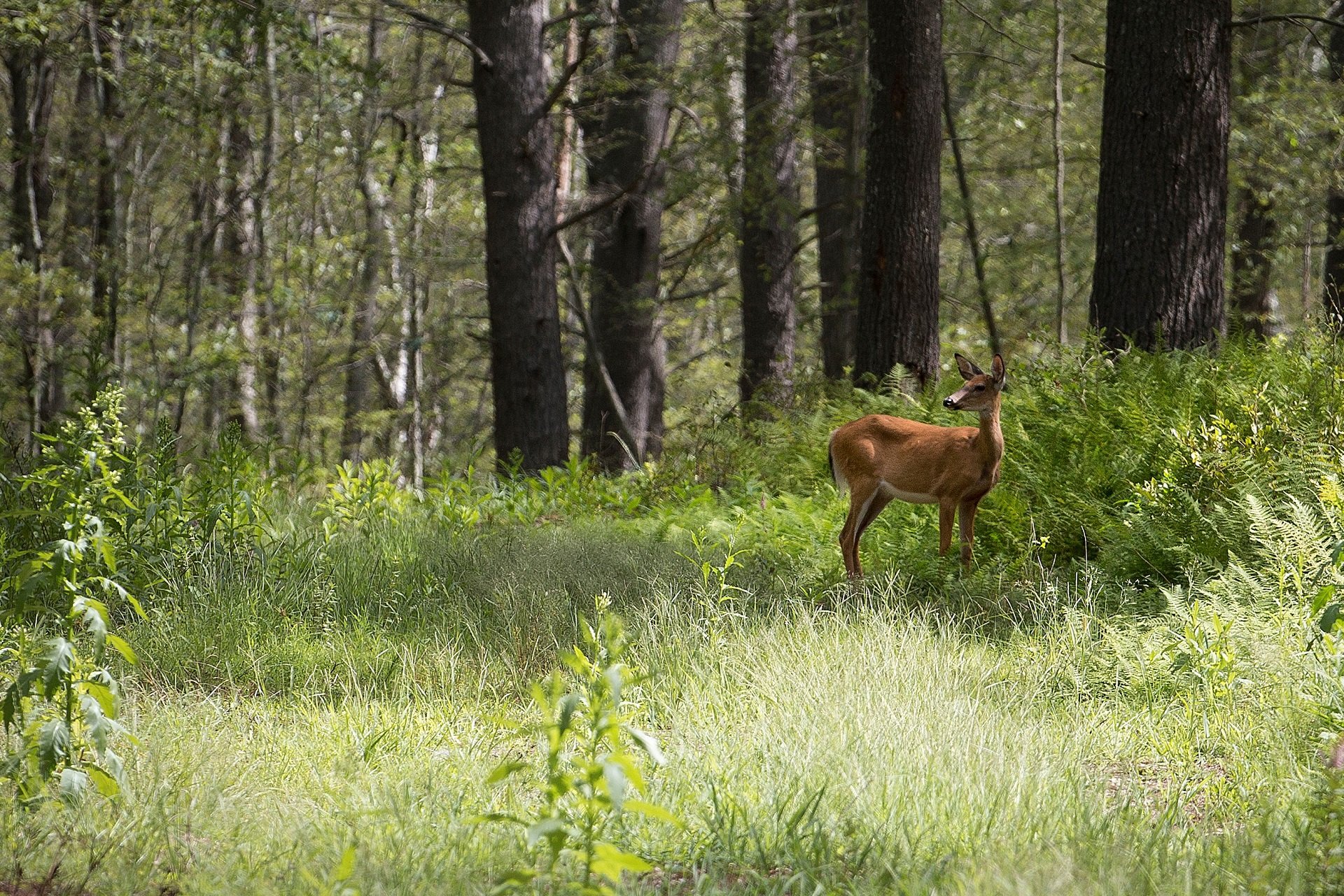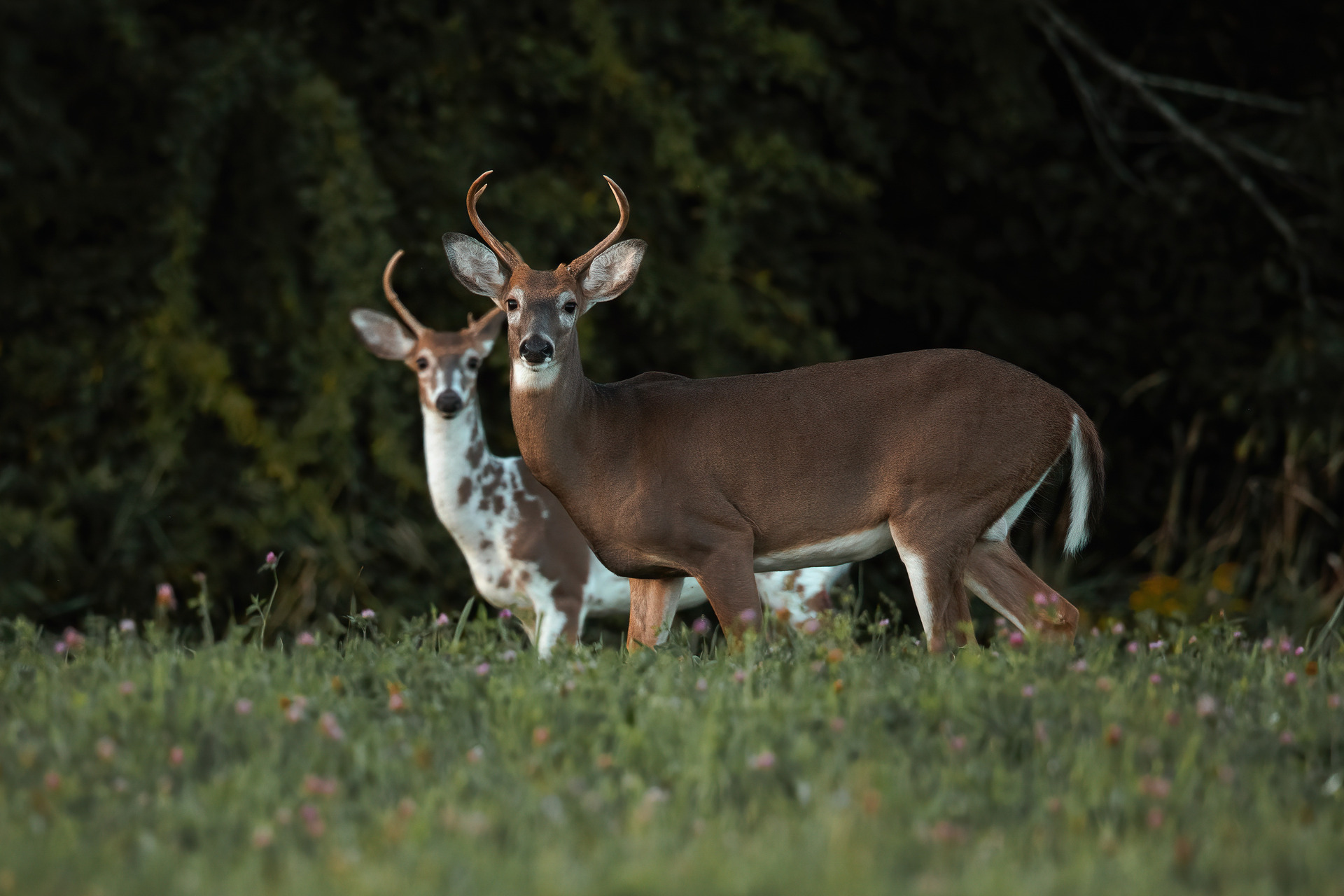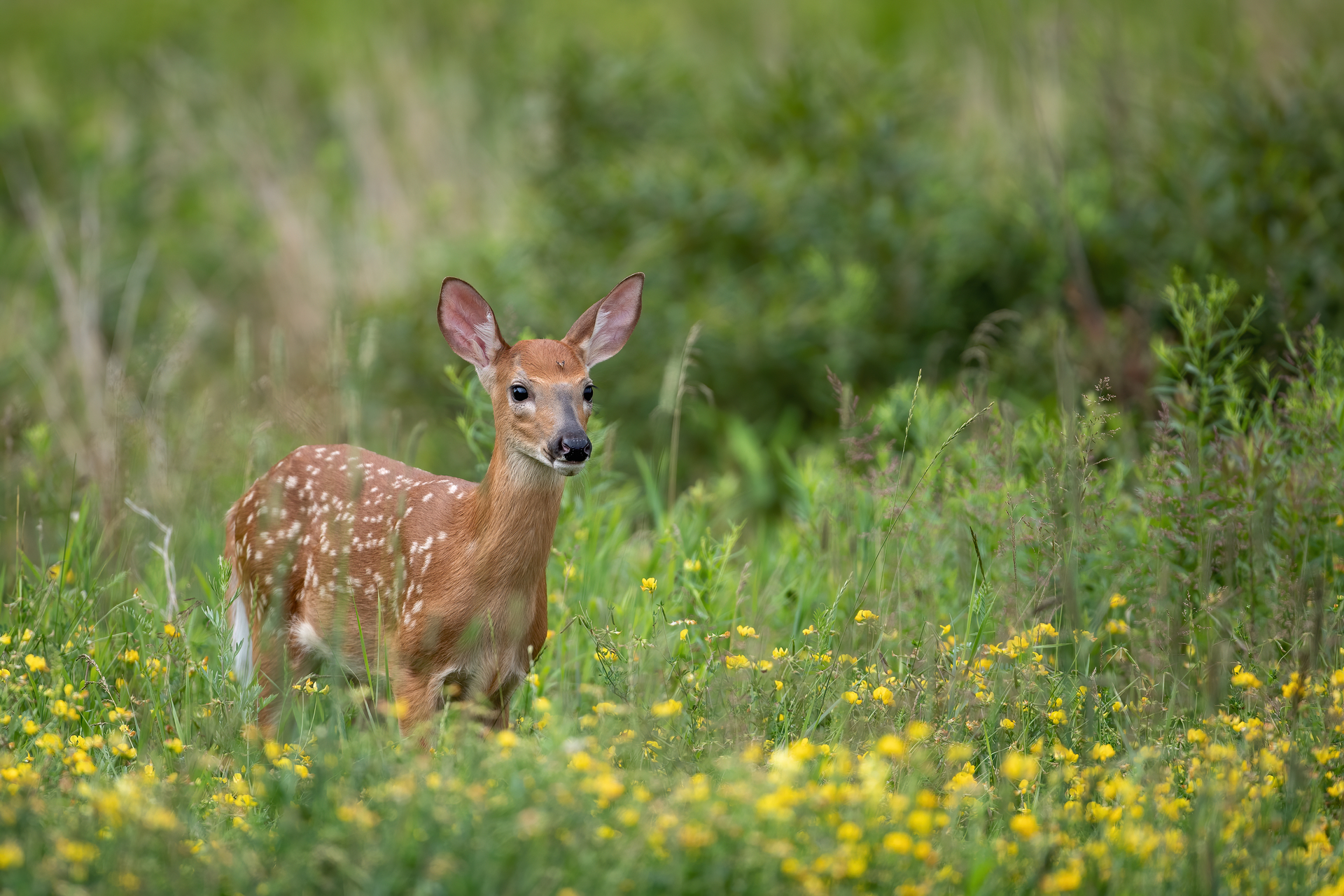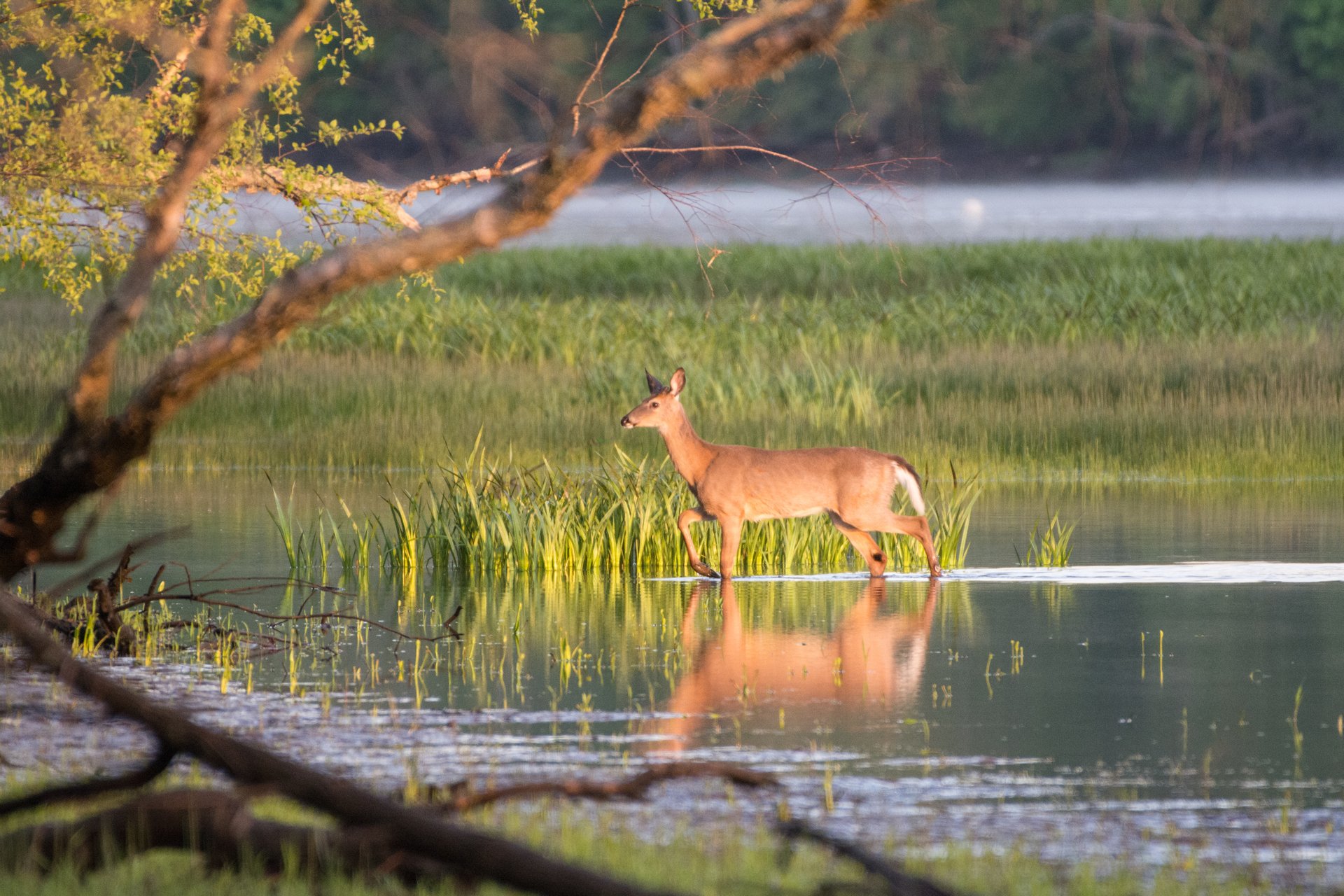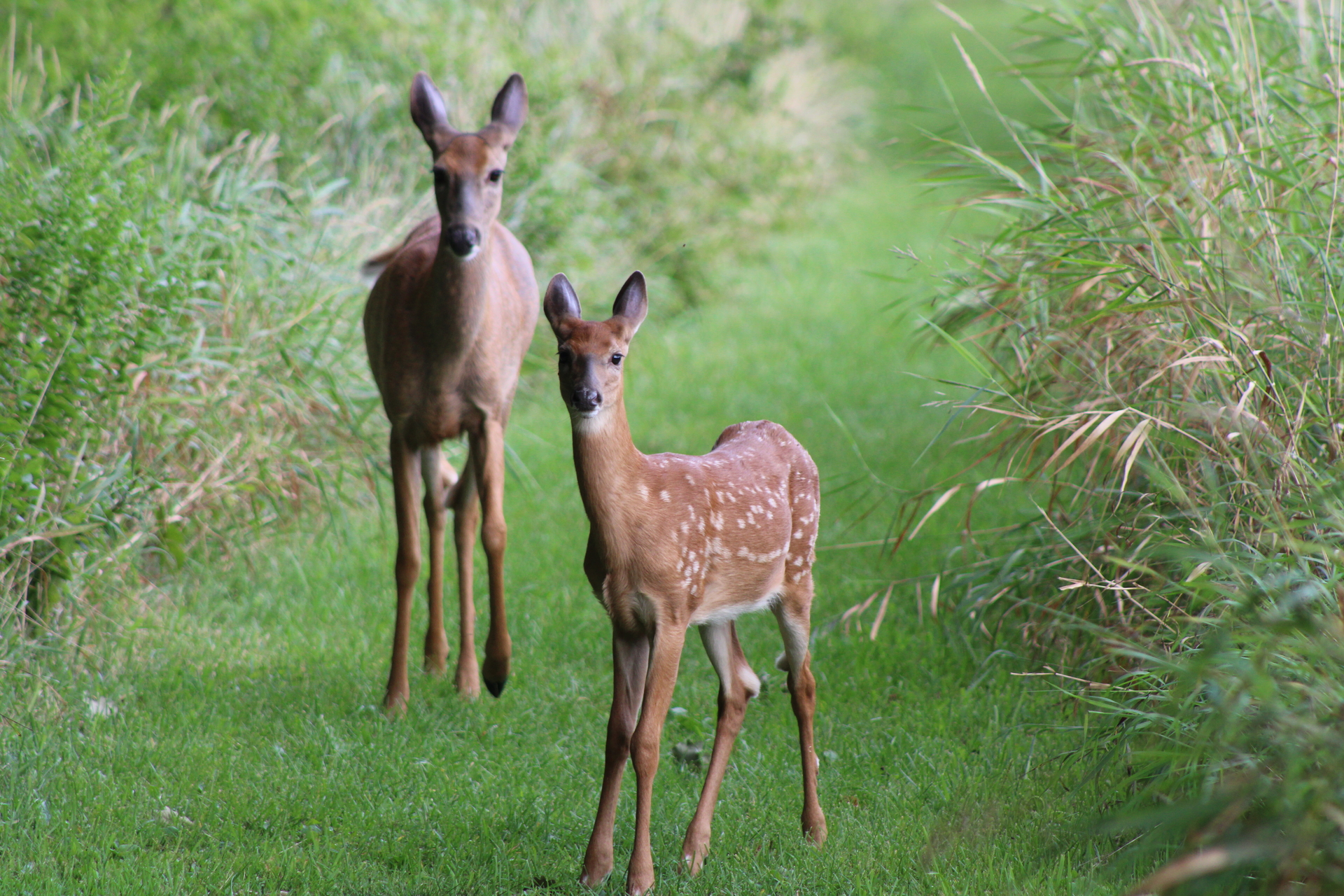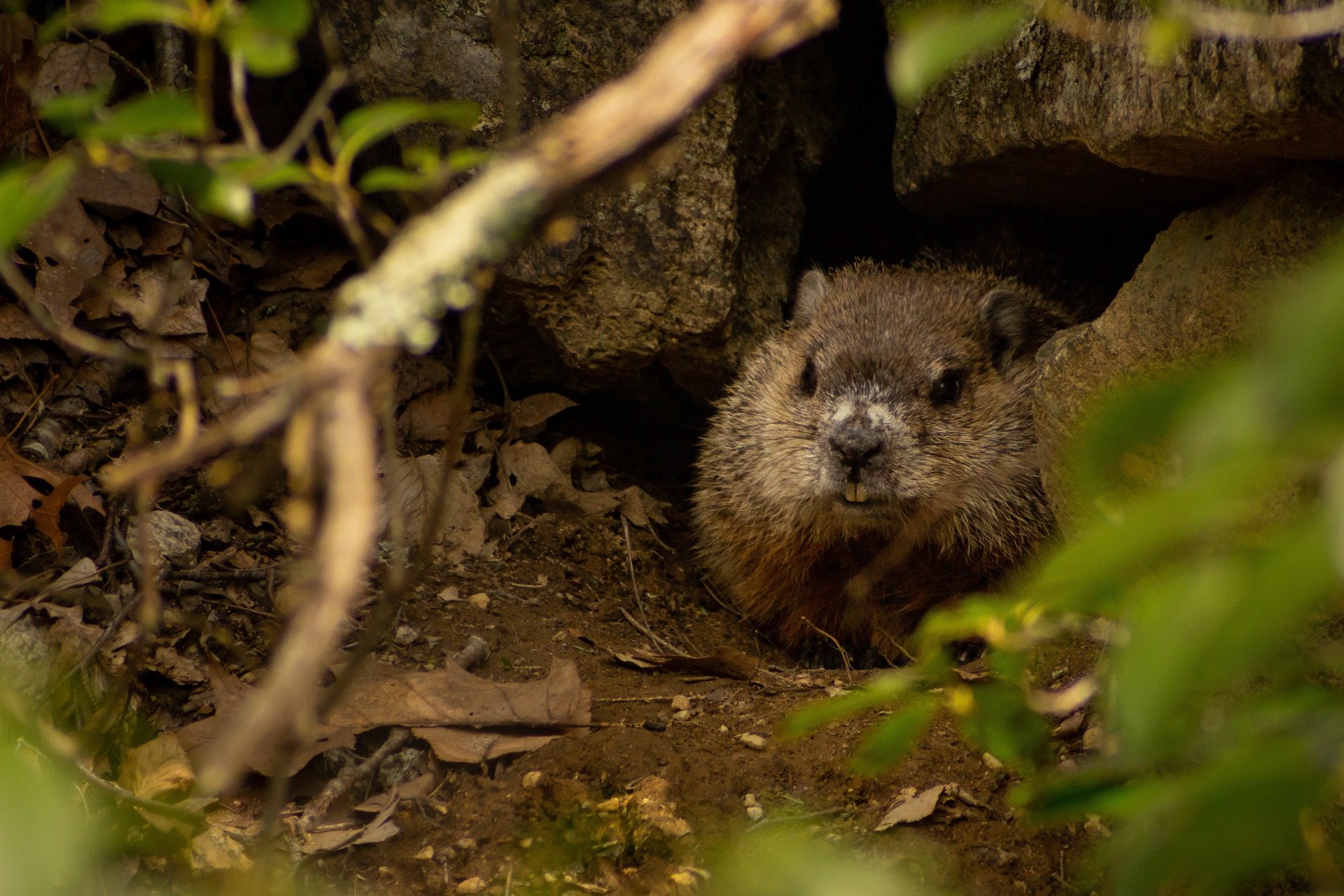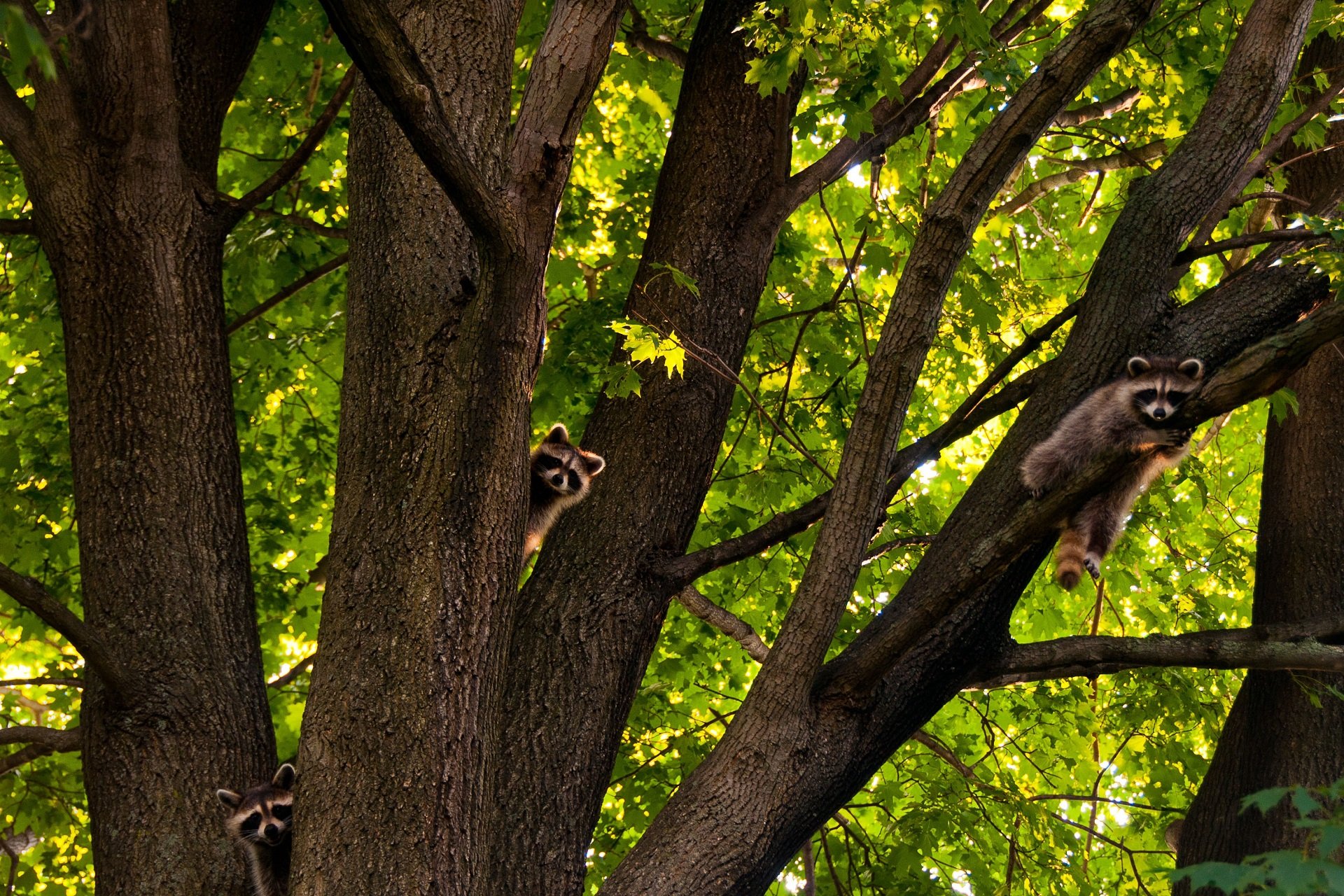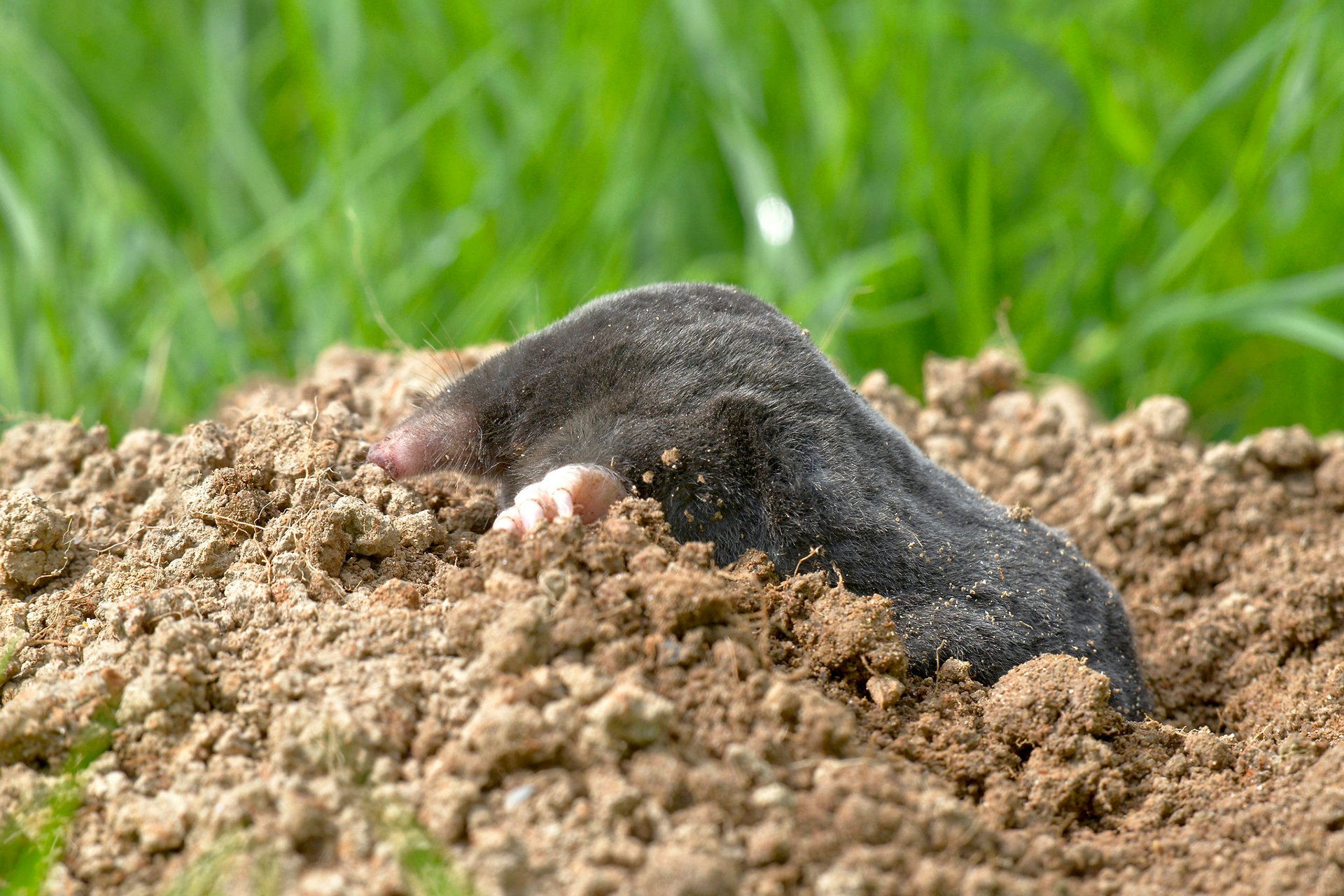White-Tailed Deer (Odocoileus virginianus) belong to an order of hoofed mammals called the Artiodactyla (even-toed), which also includes pigs, cows, antelopes, sheep, goats, camels, and hippos.
Much of Massachusetts is now ideal deer habitat. Because of this, their population has increased dramatically in recent decades, and we are seeing a significant impact on the surrounding ecosystem.
How to Identify White-tailed Deer
White-tailed Deer have long legs and narrow hooves, which make them swift runners and good jumpers. They have excellent hearing due to their large, sensitive ears. Their short tail stands erect when alarmed, displaying white fur on the underside. This behavior is called “flagging”, alerting others in its herd of potential danger.
Mature male deer, referred to as bucks, and female deer (does) can be distinguished by the presence of antlers. Male deer have antlers, while female deer do not. Mature males' antlers are highly variable but typically have a main beam around 30 inches long with "points” growing upward every few inches. These antlers will shed annually and grow larger as the buck ages.
The typical weight of an adult buck is 150-300 pounds with a shoulder height of 3½ to 4 feet. The doe is smaller and weighs much less at 90-200 pounds.
Deer Behaviors
What Do Deer Eat?
White-tailed Deer are adaptable but selective herbivores, grazing and browsing the most nutritious plants available. Their diet consists of forbs (herbaceous broad-leafed plants, including agricultural crops), soft and hard mast (seeds), browse (leafy parts of woody plants), grass, and mushrooms/lichens.
Deer Mating
Most of the year, male and female deer live in separate groups. In August and September, male deer groups disband to search for females.
Although does may reach sexual maturity as young as 6 months, the average age is 18 months. In New England, mating (or “rutting”) usually takes place in November or early December, after which they return to their maternal groups. Buck antlers are shed each year after the breeding season.
Early Life of Deer: Fawns & Yearlings
A doe giving birth for the first time will usually produce one offspring, but in later years gives birth to two, and occasionally three, young.
During the first week of life, fawns (deer in their first year) are left alone except when the mother returns to nurse. When lying motionless in the leaves, they are well camouflaged with their reddish-brown coat and white spots. Fawns do not have a detectable smell making it hard for predators to detect them.
By the following spring, the fawn becomes what’s known as a “yearling” (two-year-old deer). While its mother is raising her new fawn, the yearling will travel to feed, but stays in the area and returns to the mother for the fall and winter. The following spring, they’ll leave the mother for good, with the males joining buck groups and the females joining the does.
Where Do Deer Live?
Deer prefer forest-edge habitats close to fields, where they forage for food, and woodlands, where they find shelter and breed. They regularly visit ponds, lakes, and streams.
Deer Yards
In winter, bucks, does, and fawns gather in sheltered locations known as “deer yards”. This helps them survive severe weather by conserving body heat and discouraging predators.
Bedding Areas
Locations that provide protection during their daily inactive periods are known as “bedding areas”. Those used during the day may be secluded areas on a relatively high point where they can watch for predators. At night they will use dense thickets and groves of evergreen trees, which offer protection as well as shelter from the wind.
Deer Runs
The network of trails connecting the bedding areas or deer yards to feeding areas are called “deer runs”. If food sources remain stable, these trails can be used for many years.
Deer, Ticks, & Lyme Disease
Deer are a favorite host of black-legged ticks (aka deer ticks; Ixodes scapularis), which carry and transmit Lyme Disease.
Overpopulation of Deer in Massachusetts
In many parts of Massachusetts, White-tailed Deer populations have grown beyond their habitat's carrying capacity, due to a lack of predators such as wolves and mountain lions This causes:
- Reduced diversity of native plants and shrubs. Deer prefer to eat native species, leaving behind more room for invasive species to flourish.
- A loss of tree seedlings and saplings that will become the next generation of canopy trees.
- Extreme shrub and ground cover thinning, removing plants necessary for the survival of invertebrates, pollinators, and nesting birds.
Population Control Through Limited Hunting Program at Mass Audubon
While Massachusetts forests can sustainably host fewer than 20 deer per square mile, field observations suggest there are 2-5 times that number at several Mass Audubon properties. At this density, the health of the ecosystem is negatively affected.
To ensure the long-term health of our properties for a wide range of species, we have implemented a limited and carefully controlled hunting program on several properties to manage their burgeoning population. FAQ’s on our deer management program.
How You Can Support Deer
It is dangerous to the deer, as well as humans, to encourage deer to visit yards. This is especially true in suburban areas where deer often must cross over busy roads, putting themselves and drivers at risk.
Never feed deer or interfere with a found fawn. Deer are not able to digest the corn and pellets often fed to them by people. In addition, it makes them feel full without providing any nutrients.
Unlike some struggling wildlife in Massachusetts, deer are threatened by the effects of their own overpopulation. If you want to support a healthy deer population in Massachusetts, you can support the health of their habitats as a whole.
Stay Connected
Don't miss a beat on all the ways you can get outdoors, celebrate nature, and get involved.



